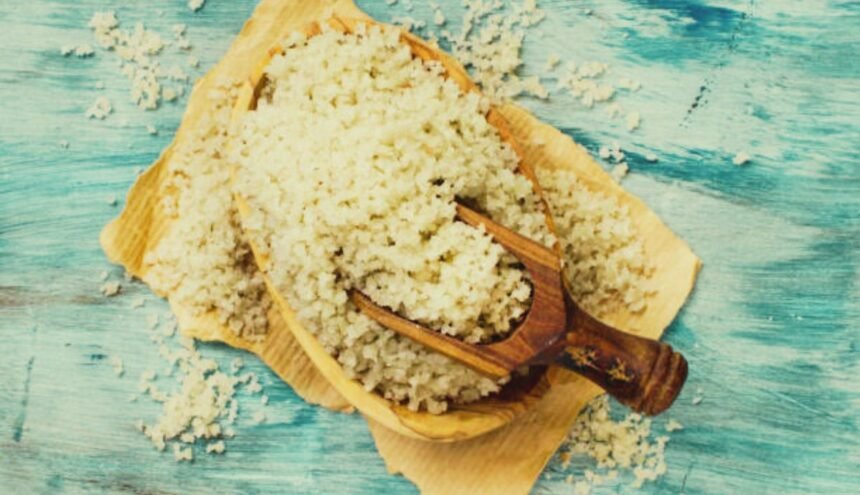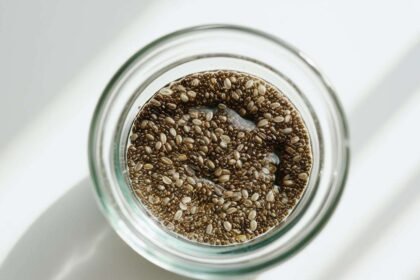Celtic sea salt is a type of unprocessed, natural sea salt that is harvested off the coasts of France and Brittany. It gets its name from the Celtic heritage of the region where it is produced.
Celtic sea salt is vastly different from regular table salt and offers numerous health benefits. Here is a detailed overview of what Celtic sea salt is, how it’s produced, its uses, health benefits, and how it compares to regular table salt.
Production and Harvesting
Celtic sea salt is harvested in a labor-intensive, natural and sustainable way. Salt farmers collect seawater and allow it to evaporate in clay-lined ponds that are built on the natural clay of the marshlands.
This allows the seawater to evaporate slowly under the sun while preventing any clay contamination of the salt crystals.
The farmers only collect the top layer of salt crystals by hand using wooden tools only. This minimal contact ensures the salt retains all its natural mineral content and flavor.
The production of Celtic sea salt is done entirely by hand without the use of any machinery. This protects the fragile mineral structure of the salt crystals from being damaged or altered.
The salt farmers allow the rest of the brine solution to continue evaporating to keep the marshland wetlands intact for the migratory birds that depend on it. This sustainable harvesting practice has continued for thousands of years in Brittany, France.
Natural Minerals and Nutrients
Unlike regular table salt that only contains sodium and chloride, Celtic sea salt contains a broad spectrum of essential natural trace minerals like magnesium, calcium, potassium, iron, manganese, zinc, iodine and more. It also retains a high moisture content since it is unrefined and minimally processed.
These minerals and electrolytes are vital for optimal health and cellular function in the body. Consuming these through real food sources like Celtic sea salt is more beneficial than taking isolated mineral supplements.
The greyish hue of Celtic sea salt comes from the clay ponds that are rich in these minerals. The minerals get naturally incorporated into the salt flakes as they crystallize slowly. Therefore, the grey color is a sign that the salt contains these beneficial minerals.

Flaky, Moist Texture
Celtic sea salt has a flaky, moist texture that is quite different from highly processed table salt. Since it contains moisture, the salt crystals tend to cling together in flakes rather than pour out freely. The flakes dissolve easily on the tongue, resulting in a flavor burst and rapid mineral absorption.
Uses in Cooking and Food
Celtic sea salt is considered a finishing salt rather than a general cooking salt. Its delicate flakes and mineral content are best preserved when sprinkled on food right before eating. It can be used to season meat, poultry, fish, salads, roasted vegetables, soups and more. The salt draws out the natural flavors of ingredients beautifully.
A little bit of Celtic sea salt goes a long way in terms of flavor because of its highly concentrated mineral profile. It can also be used in making brines and pickling solutions. The minerals help promote healthy fermentation while adding complexity of flavor.
Grinders are the best way to store Celtic sea salt to protect the salt structure. The flakes can also be ground finer to use in cooking if desired. However, the innate moisture makes it less suited for general cooking compared to drier salts.
Health Benefits
Celtic sea salt offers a broad spectrum of trace minerals that are easily absorbed by the body. This provides several health advantages:
- Improves electrolyte balance – The array of minerals helps replenish electrolytes lost through sweat, urination, vomiting or diarrhea. This promotes optimal fluid balance.
- Strengthens bones – Minerals like calcium, magnesium and phosphorus play a key role in bone formation and strength. This reduces risk of osteoporosis.
- Supports muscle relaxation – Minerals like magnesium and calcium help muscles relax after contractions. This prevents muscle cramps.
- Regulates blood pressure – The balanced mineral content helps maintain healthy blood pressure levels.
- Boosts immune function – Minerals like zinc and selenium support immune cell function to fight infections.
- Promotes dental health – The trace minerals help strengthen tooth enamel and bones that support the teeth.
- Improves skin hydration – The moisture content helps the skin retain water better from within.
- Supports digestion – The minerals aid the production of digestive enzymes and stomach acid to improve digestion.
As you can see, Celtic sea salt offers a broad spectrum of health advantages thanks to its rich mineral content. It’s no wonder this traditional salt has been treasured for centuries!
Comparison to Table Salt
Table salt is vastly different from natural, unprocessed Celtic sea salt. Table salt consists almost entirely of sodium chloride that is harvested mechanically from land salt deposits. It is intensely processed and stripped of all its natural mineral content besides sodium and chloride.
Anti-caking agents are also added to table salt to prevent clumping. Iodine is usually added as the only mineral – this addresses the iodine deficiency seen in the 1920s but creates an imbalance in sodium to potassium levels. Table salt crystals are also fine and uniform unlike the delicate flakes of Celtic sea salt.
Therefore, while regular table salt only offers a sharp, singular flavor, Celtic sea salt provides a burst of multiple mineral flavors and health advantages. The moistness also makes it easier to sprinkle on food without over-salting.
Difference from Himalayan Pink Salt
Celtic sea salt is sometimes compared to Himalayan pink salt as both are natural, unprocessed salts harvested by hand. However, there are some distinct differences:
- Origin: Celtic salt comes from coastal areas in France, while Himalayan salt comes from salt mines in Pakistan.
- Color: Celtic salt has an off-white, light grey hue while Himalayan salt is pink due to mineral impurities.
- Texture: Celtic salt forms softer, more delicate moist flakes while Himalayan salt is drier and coarser.
- Minerals: The mineral content varies slightly based on the natural geology of their origin. But both offer a broad, balanced spectrum.
- Flavor: Celtic salt is said to have a milder, softer flavor while Himalayan salt has a sharper, bolder taste.
Overall, both salts are highly nutritious and healthy. The choice comes down to personal preference on flavor, texture, color and origin.
Finding Authentic Celtic Sea Salt
With the rising popularity of Celtic sea salt, there are many imitation products in the market today. To enjoy the true benefits of real Celtic sea salt, always look for the following:
- Harvested in Brittany, France: Authentic Celtic salt only comes from this region with generations of artisan farmers.
- Look for moist, greyish flakes: Uniform white powder is likely an imitation product.
- No additives: Check labels for anti-caking agents or “free flowing” additives.
- Protected harvesting: Ensure sustainability practices are used to preserve wetlands.
- Organic and kosher certification: Reputable brands will have these certifications.
- Reputable brand: Do your research to find a genuine producer like Selina Naturally Celtic Sea Salt.
Checking these aspects will ensure you get genuine, high quality Celtic sea salt to enjoy maximum nutrition and flavor. Discover the unique taste and health benefits of this age-old natural salt.












